Rod’s father, Gary Emory (and both of his uncles, Kenny and Don) worked at Chick Iverson’s Newport Beach Porsche/Volkswagen dealership when Porsche was still finding a foothold in the United States, and Gary went on to have the remarkable clairvoyance to start Porsche Parts Obsolete – a company that saved old Porsche parts from the crusher and kept untold numbers of beloved air-cooled rides on the road.
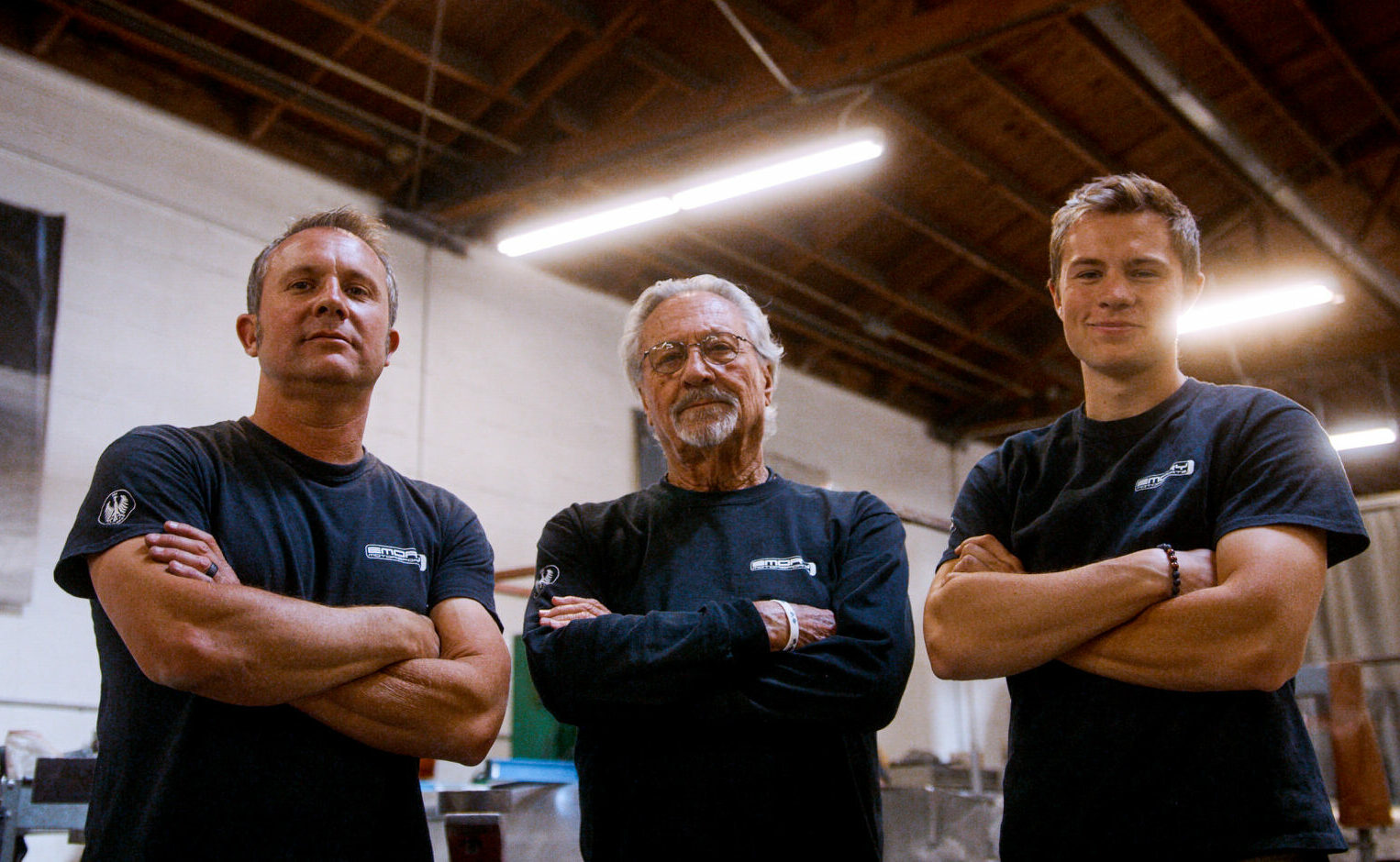 Prefer your content via moving pictures?
Check out our video profile on Rod + Emory Motorsports.
Watch Now
Prefer your content via moving pictures?
Check out our video profile on Rod + Emory Motorsports.
Watch Now
Suffice to say Rod Emory’s path to Porsche obsession was laid out from birth, and while he never really stood a chance having been driven home from the hospital as a newborn in a short wheelbase 911, it was a passion for racing that ultimately gave Rod his entree to the Porsche world as a calling. An early ‘50s 356 model was his first race car and modifying and campaigning that little 356 would eventually lead to Emory Motorsports, a business Rod founded with his wife Amy that started out building, maintaining, transporting, and looking after hot-rodded vintage 356-based track cars for clients. The competition-optimized cars Rod spun from the legendary 356 platform became known as “Emory Outlaws” and their potent cocktail of subtle styling updates and high performance tech caught on in a way that has led to a business with 20 full time employees and 4 year waiting list for an Emory-modified car. It’s also seen the Emory family tasked with restoring and taking care of some of the most important competition Porsches of all time, including legendary 906s, 908s, and even the original “progenitor of Porsche Motorsport” 1951 356 SL “Gmund,” an impossibly important car that Rod brought back to its original Le Mans competition form from a virtually unrecognizable state. From driving dynamics and pure speed to his gifted work shaping bodywork the traditional way as a 3rd generation metalworker, there’s a magic to Emory’s cars that simply must be experienced in-the-metal to be fully appreciated.
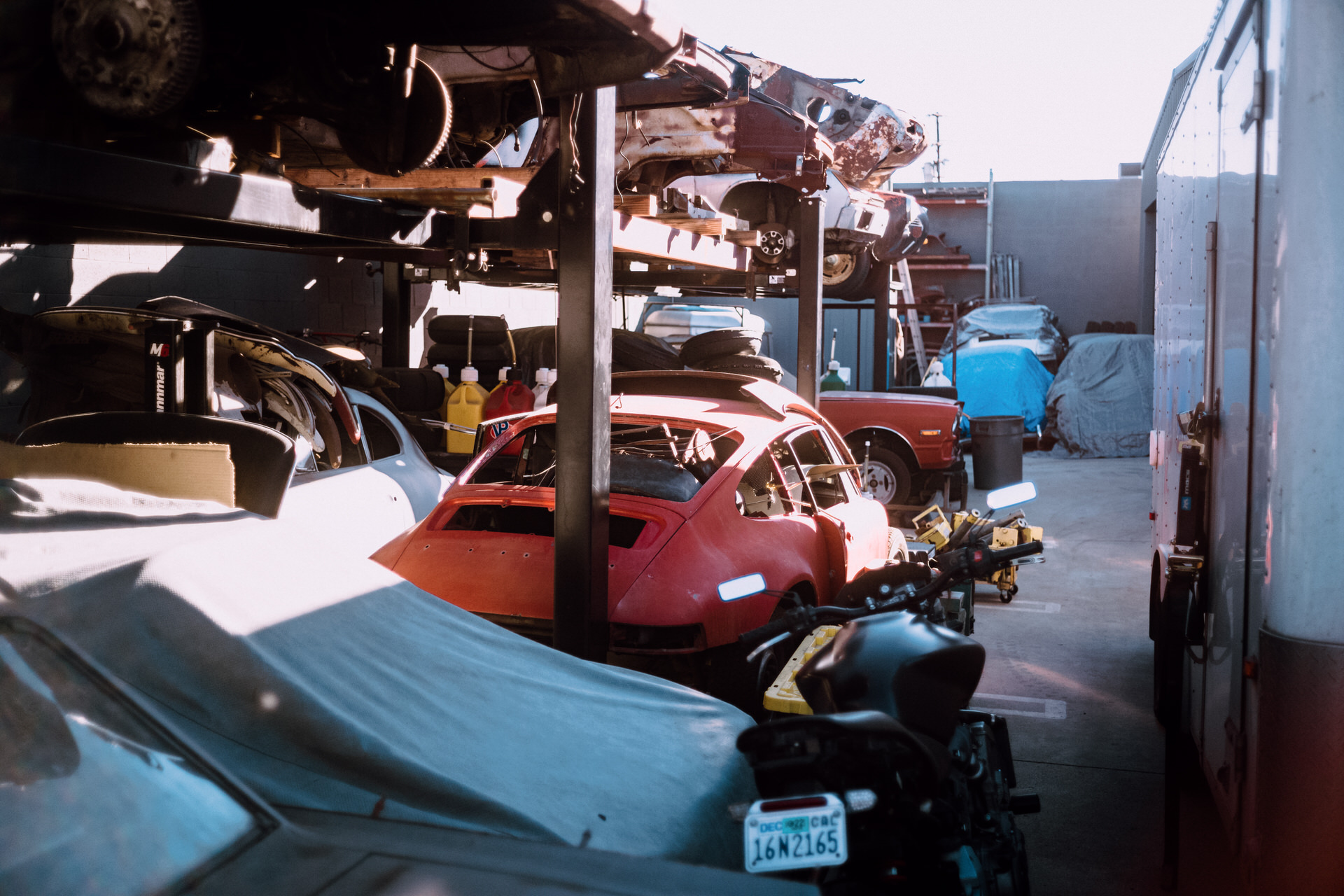
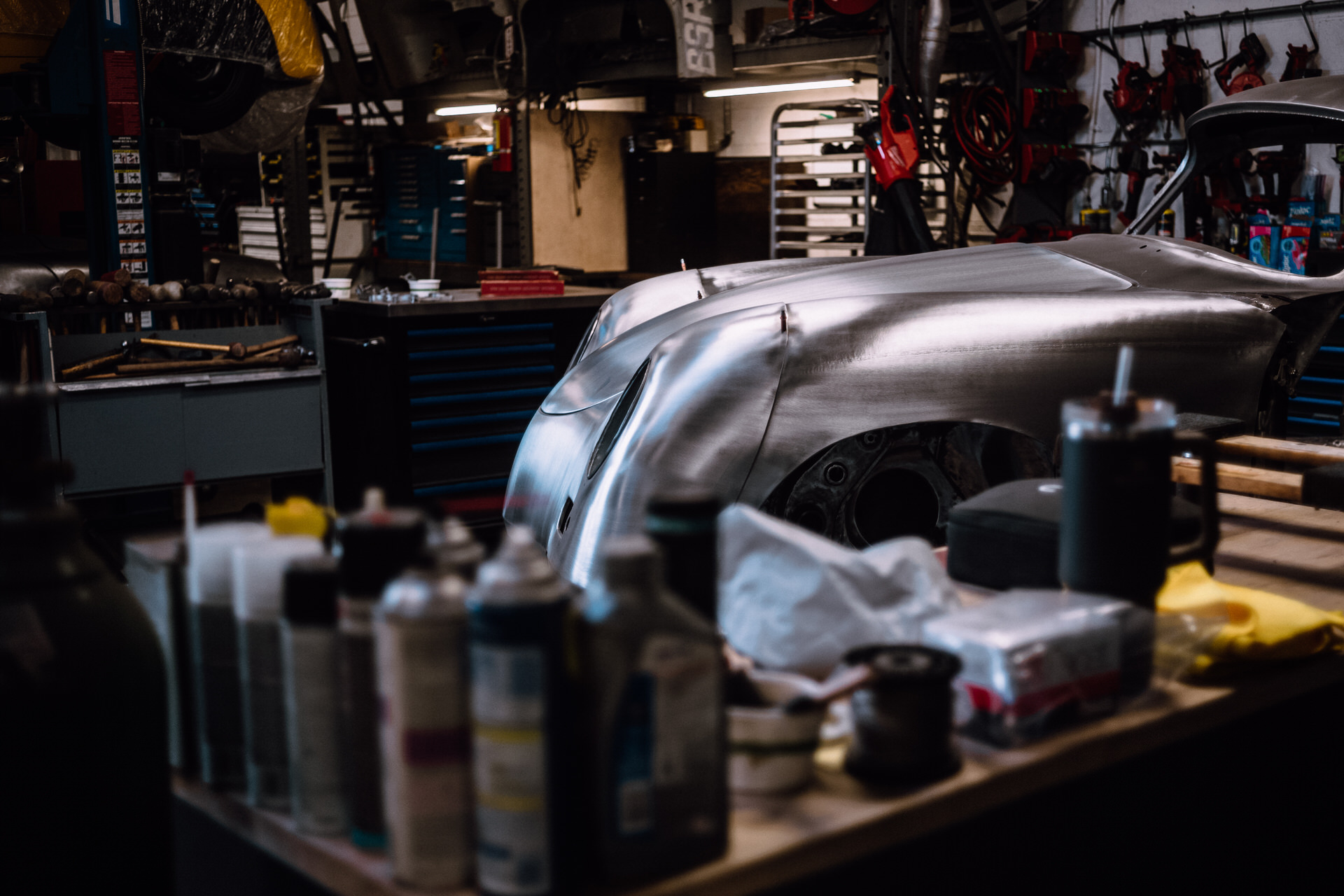

Recently, Rod’s young son Zayne has felt the call of the family business and has slowed a successful acting career that has included recurring roles on hit TV shows like The Goldbergs and The Rookie to focus on working alongside his dad and writing the next chapter in the Emory Motorsports story. While Zayne has a preservation-first approach to the Porsche world that differs wildly from his father’s “modify everything” philosophy, the passion remains the same. Something the pair also share a passion for is watches – specifically (and unsurprisingly) Porsche Design watches.
While Rod never set out to be a watch collector, he amassed a fantastic collection of Porsche Design watches over his many years in the P-car business. What began as a childhood fixation on an original Porsche Design Chronograph 1 that his father Gary was gifted during his Chick Iverson Porsche days and subsequently left in a junk drawer has led to a collection of over 15 Porsche Design watches. Rod recently asked the team at C + T to source yet another vintage Chronograph 1, however, this time, it was to give to Zayne. Zayne’s new (old) watch presented the C + T Journal with the incredible opportunity to visit the Emory Motorsports facility in North Hollywood and to get an insider’s look at how Rod, his family, and his team infuse old Porsches with the Emory magic.
Surrounded by wooden metal-shaping bucks, massive antique metalworking tools, legendary Porsche race cars, and a king’s ransom 356 husks in various states of transformation, Rod discussed the Emory family’s incredible legacy, watching Porsche’s culture grow from the ground level, riffed on why the 356 remains such an intoxicating car, and explained how a man that never set out to collect watches ended up with a watch box filled to the brim with rugged looking and rare Porsche Design pieces.
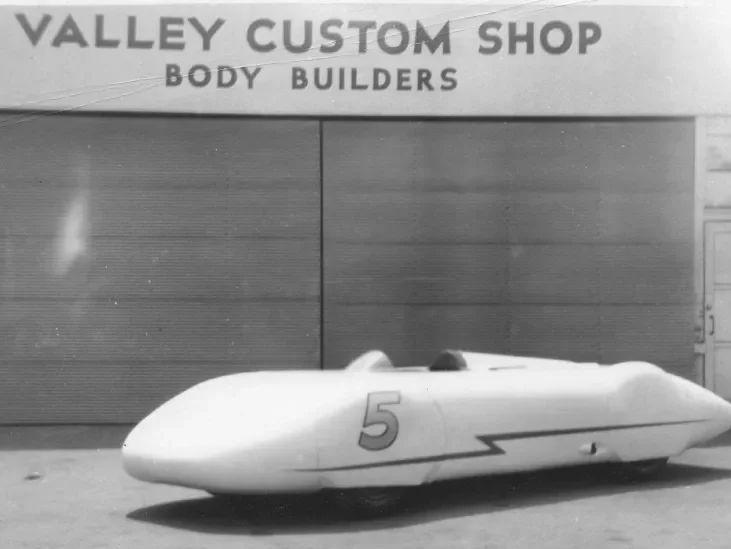
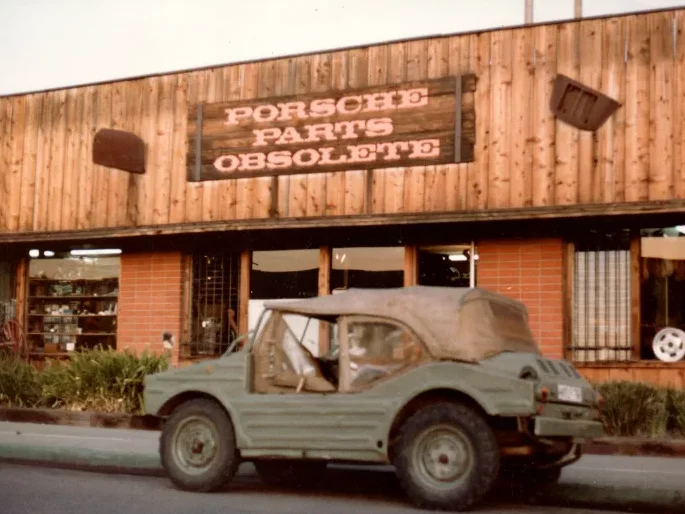
Walk us through your family history and explain where Emory Motorsports story really began.
I’ve been building, restoring, and racing Porsches for 33 years now, since I was about 14 years old. Growing up in Southern California my love for cars started at a really young age. I grew up driving the original Baja Bug with my dad and grandpa when I was only 5 years old out on Pismo Beach, and I went from that to riding little 3-wheelers and 4-wheelers off road. So I grew up racing ATVs from when I was about 10 years old until I was 16 years old, and I raced all over the country and made it all the way to the pro level race field to what was called the Mickey Thompson Off Road Series. Growing up in an automotive family, obviously I loved any type of motorsports and my father and grandfather really took that passion all the way back to the ‘40s. My grandfather, Neil Emory, had Valley Custom Shop in Burbank, California – which he started right after he got out of the war. He was really one of the pioneers of hot-rodding and custom car building and one of the first projects that he worked on was the famous Belly Tanker – which was a fuel tank taken off of an aircraft that was turned into a dry lakes race car and was owned and run by So-Cal Speed Shop. My grandfather did all the metal work on that and then he went on to build what was called the So-Cal Streamliner, which was the first hot rod to go over 200 miles an hour. And then at Valley Custom Shop, they were the pioneers of channeling and sectioning old American hot rods. So his shop operated from 1947 until about 1961, and they built some of the most iconic hot rods and custom cars of all time. Around ‘61, he had an opportunity to pack the family up and move them to Newport Beach, California when a friend of his named Chick Iverson bought the Porsche and Volkswagen dealership in that area, and Chick asked my grandfather Neil to come run the body shop.
At that time, my dad had just graduated high school and really the whole family ended up working at that dealership. My grandfather ran the body shop, my dad started out detailing cars and working in the VW department and then became the parts manager, and both of my uncles worked there. One of them, Kenny, was in the parts department and my uncle Don was the body shop apprentice. So my whole family ended up at this Porsche dealership in Newport Beach.
A few years later, my father, Gary Emory, approached Chick Iverson with the idea to go to Porsche and buy all of what they’d call “distributor obsolescence,” so all the old Porsche parts that were sitting in the distribution warehouses around the US. These were parts that were overstock or stuff that was sent back to the distributor, and my dad suggested to Chick “Hey, we should buy all this stuff before it all goes to the crusher and gets thrown away and preserve the parts and have them available for people that want to keep their Porsches running down the road.” So in 1974, my dad started Porsche Parts Obsolete with Chick Iverson as his boss, and eventually, my dad ended up buying that business from Chick. I was born right around then, so I grew up literally in a warehouse that was full of new-old-stock original Porsche parts and I learned every aspect of all these little Porsche 356s and 911s, right down to the nuts and bolts of every car. Shortly after that, my grandfather was retiring from Chick’s dealership and he and my uncle started Emory’s Porsche Restorations, so I had an opportunity to learn how to do bodywork, paint, and metal work from them at a young age. So my love for these cars started when I was very young and growing up racing those 3-wheelers and 4-wheelers eventually led to me wanting to build and race Porsches – which I’d say officially started when I was 14 years old.
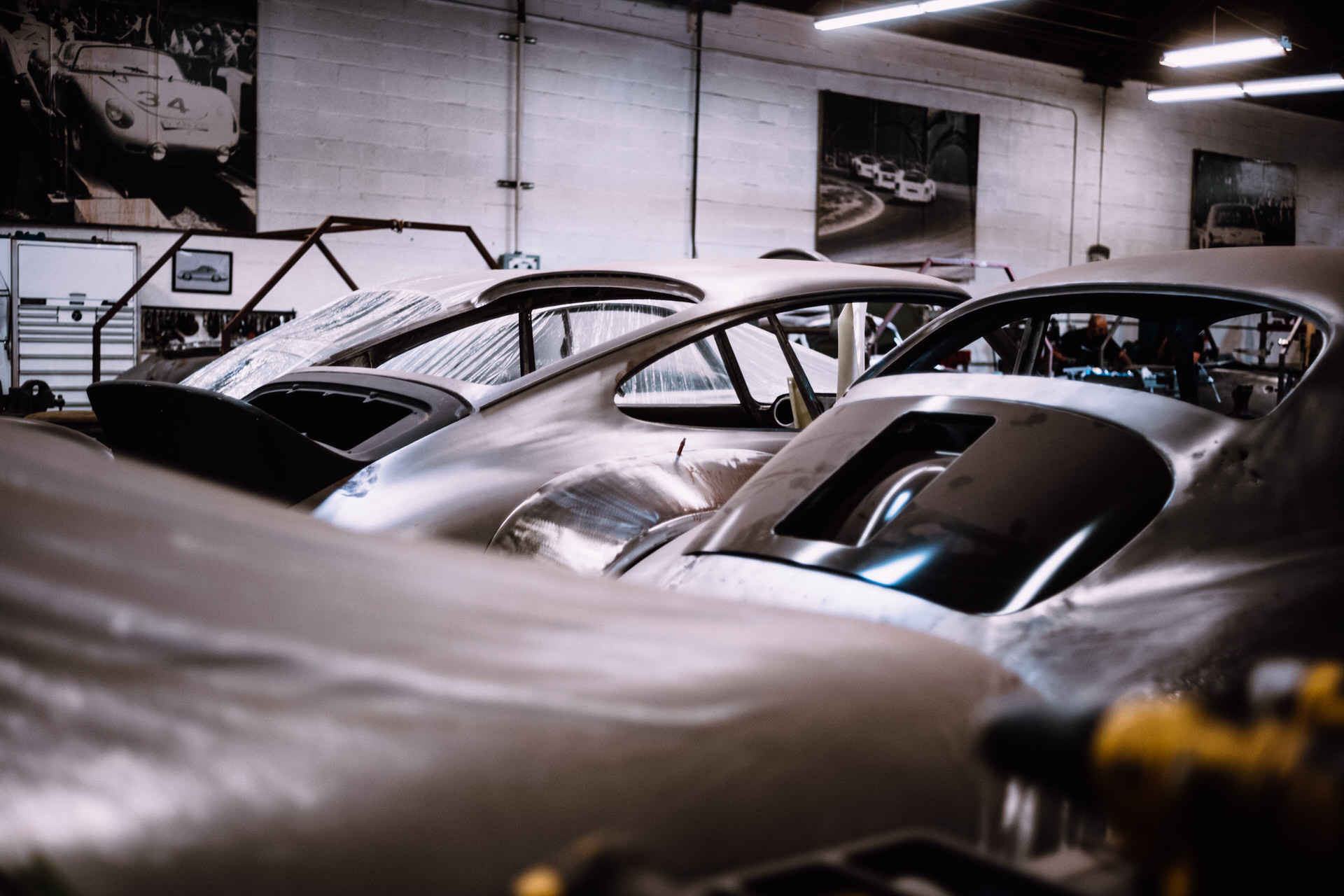
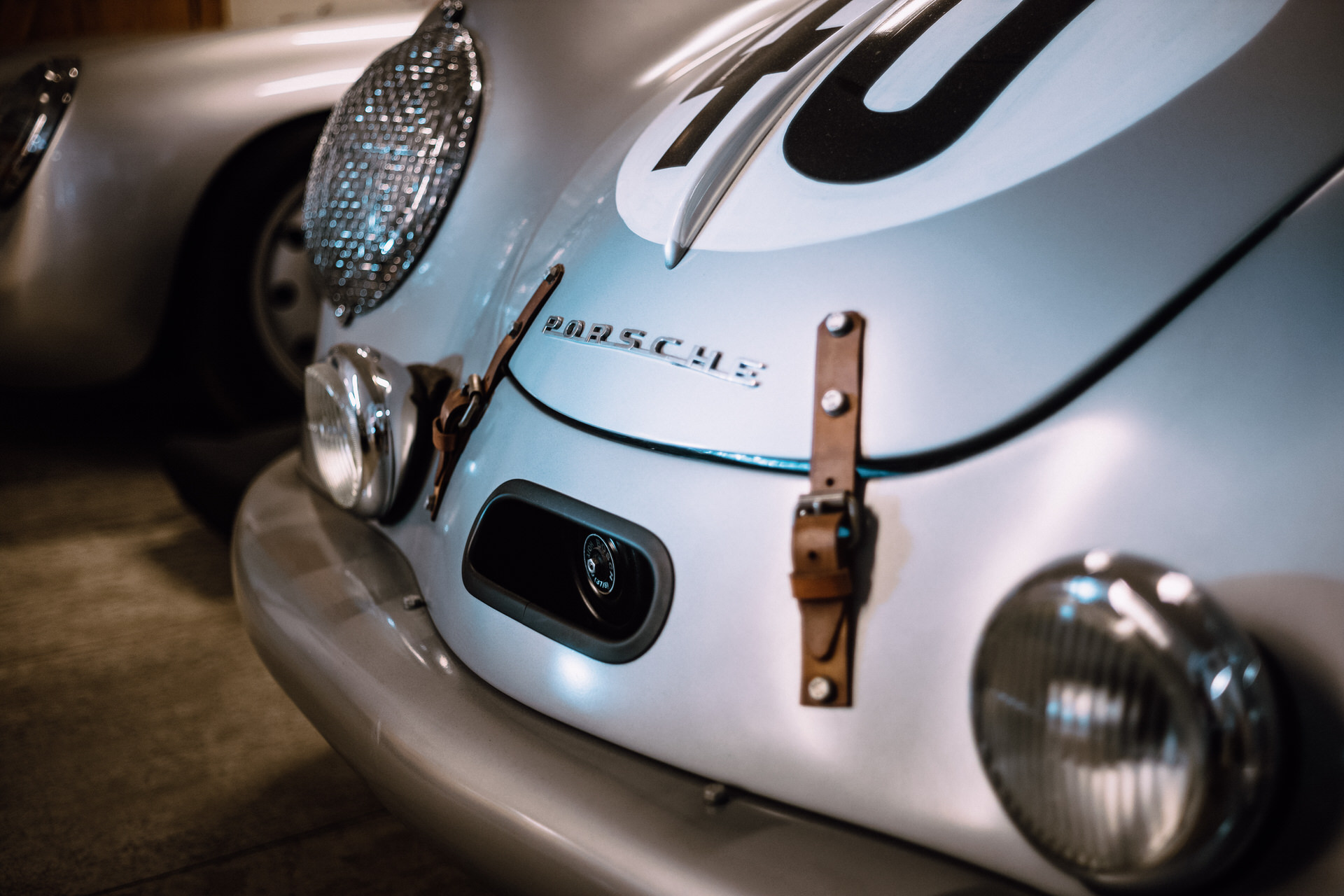

What was your first Porsche race car?
My dad found a 1953 Porsche 356 that was pretty rusty and I did a complete restoration on that thing from one end to the other; I started on it when I was 14 and finished it when I was 16, and that’s when I started racing it. That car had me racing at events around Southern California for a couple of years, and then I graduated high school. I thought I wanted to be an aerospace engineer, so I moved to Seattle, Washington for a short period of time to chase that dream and I went to University of Washington, but while I was on my way up there, I raced at the Portland Historics in 1992, and that’s where I met Cameron Healy, who owned the company Kettle Foods. Meeting Cameron was really the beginning of Emory Motorsports because he was the first customer that had me looking after a race car and taking it to the track for him. That relationship started Emory Motorsports Vintage Racing on its trajectory – which officially my wife Amy and I started when we got married in 1996.
Our business from 1996 until about 2008 was primarily focused on building vintage race cars – mostly 356s and early 911s and a handful of other prototype cars like 906s and 904s – but the core of our business was building these vintage race cars for people, loading them up in our trucks, and taking them racing for clients. Alongside that, we were also building maybe 2 or 3 Emory Outlaws or Emory Specials every year – mostly for our vintage race car clients. In 2009, we shifted the business from vintage racing and track support to what you see today and we’ve been focused on building bespoke Emory Outlaws, Emory Specials, and what we call an Emory RS since then.
These cars basically take 1950s or 1960s Porsche – which originally had 60 to 90 horsepower – and give them between 200 to 400 horsepower and all the other components they need to take and apply that power and to make it a more modern and enjoyable drive for today, but without losing the charm and the real spirit of the 356. We build about 15 cars a year in our North Hollywood shop, we build them for people all over the world, and we’ve got around a 4 year waiting list now.
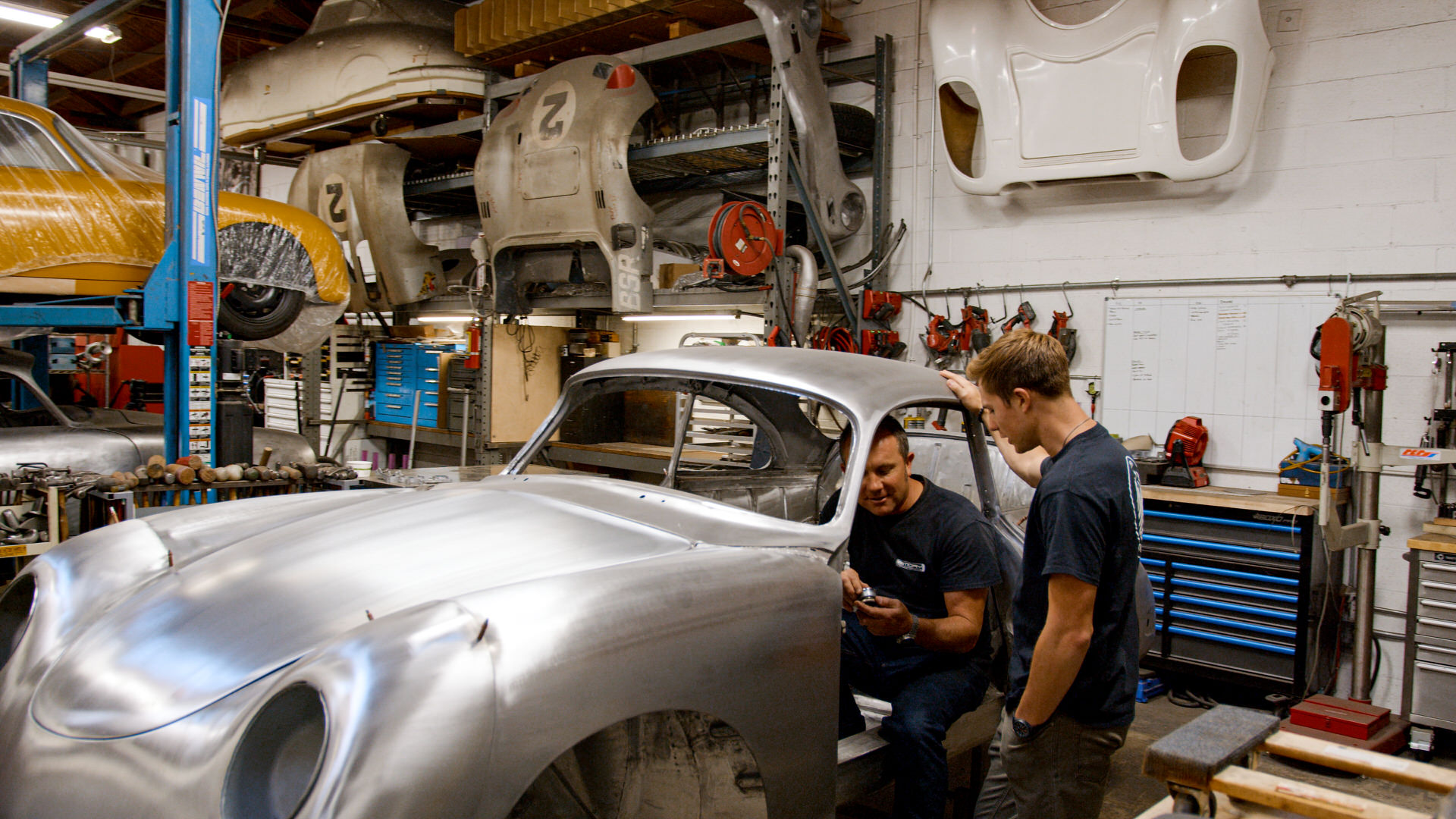
I love that your son Zayne is involved in the business now. He’s been enjoying a fruitful acting career, so what drew him back into the fold?
When my wife and I started the business in 1996, it was with the hope that it’d become a legacy business, but you never know and you don’t want to force that on your kids. Zayne started racing go-karts when he was around 5 and did that for a number of years, but when he was 10 years old, he started his career in Hollywood and did a number of national commercials, which led to him being on 4 different Disney shows, and was a guest star on shows like The Goldbergs for 6 or 7 years, and he currently plays Nathan Fillion’s son on the ABC show The Rookie. So Zayne has had a great career for the last 12 years as an actor, but over the last year-and-a-half, he’s really found his love for the cars and has circled back to it. Zayne has always found himself in the shop helping me since he was a young kid, but now he’s in the shop a minimum of 30 to 40 hours a week building cars with me.
Zayne’s real love for the cars is preservation and restoration and all the original details, which is a nice complement to what I do, which is really modifying everything. So Zayne brings a real passion for authenticity and preservation that allows us to do more projects that focus on that rather than modification. Also this past year my daughter Jade, who has always worked in the summers for Emory Motorsports, but had gone off to UNLV, decided to make Emory Motorsports her permanent career path this year and full-time in the shop doing all of the purchasing scheduling and the behind the scenes work that makes things run smoothly. It’s great. You never want to force it on your kids, but I love that they both found their way back to it.
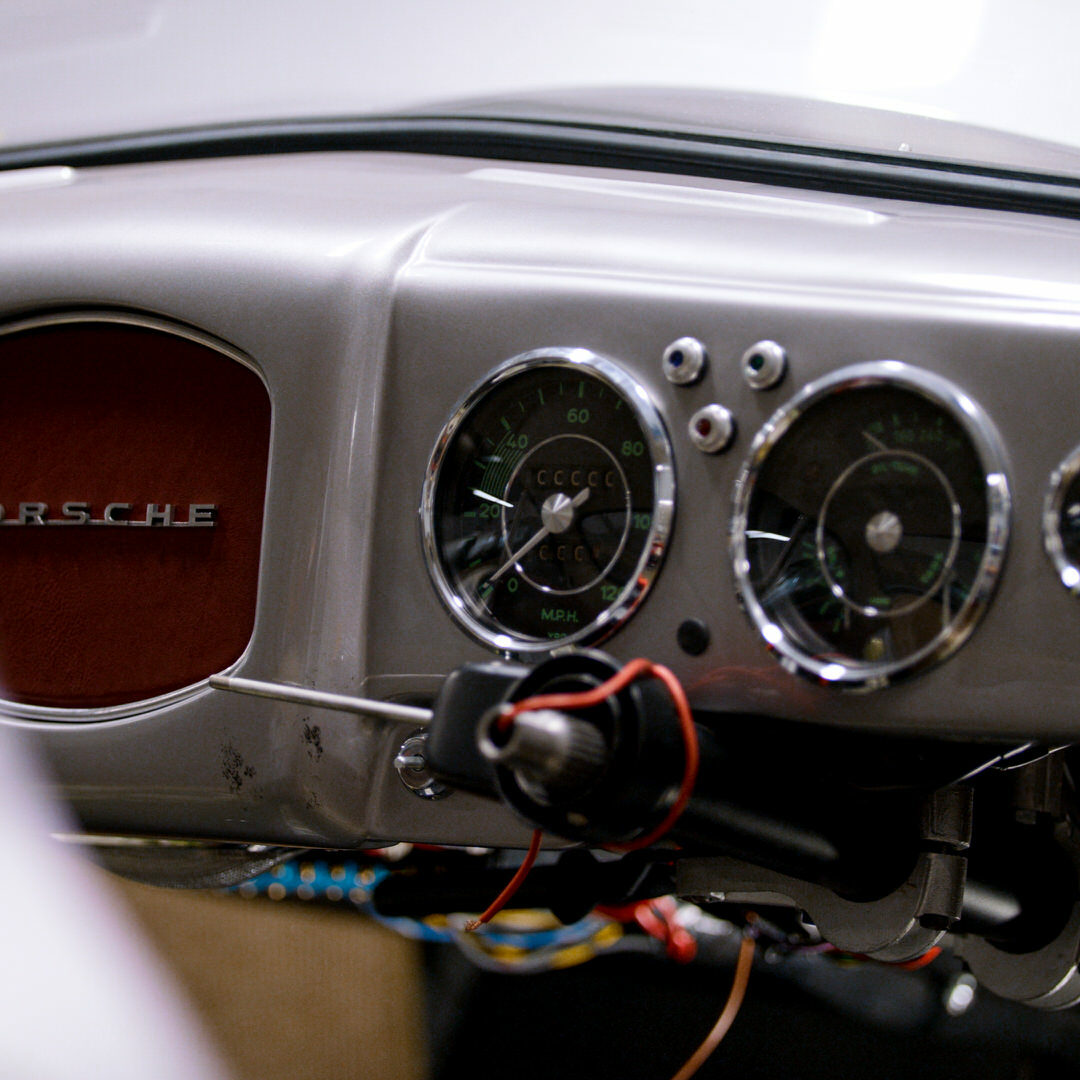
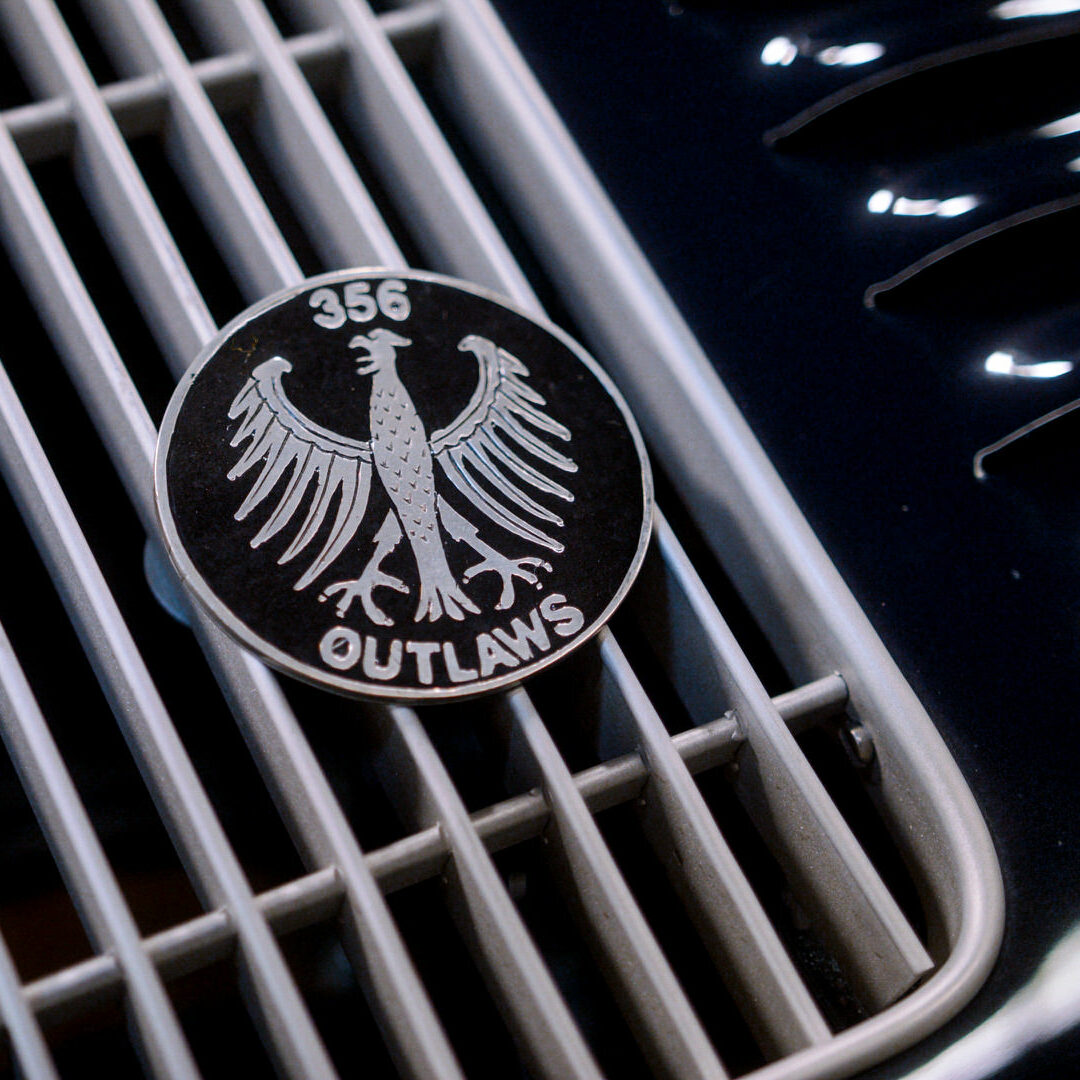
One of my favorite things about Porsche is it offers a lot of different spaces to explore and fosters a lot of different interests within car culture. There are so many different ways you can approach Porsche, but it’s a brand that consumes and turns people into obsessives. Your family is proof positive of that. Can you contrast your taste and your interests in Porsche with both your dad’s and Zayne’s.
That’s what I love about it! My dad has his take on the 356s and early 911s, I’ve got mine, and Zayne clearly has his own. For me, I’m a very technical guy; I love looking for ways to get every second that I can out of a car on the race track. I grew up racing, so my real core focus is about performance. I always joke around, but my dad was always more about the “all-show-no-go” approach and never really cared much about how a car performed, he just wanted it to look a certain way. And I learned styling and aesthetics from my grandfather and my father, and I learned the technical aspect from my racing background. Bringing Emory into the fourth generation, Zayne’s the type that doesn’t want anything to disappear; when he’s disassembling a car, if the emblem that came off the car still looks good, he’s trying to figure out how he can reuse the original emblem. Zayne loves protecting the authenticity of a car. Obviously he’s also into modified cars and he loves the performance aspect and gets a lot of that from me, but what really drives him is preservation and saving the parts and saving cars – so it’s a nice balance between us.
You’ve had a front row seat to watch the Porsche community blossom into something much, much larger than it’s ever been over the last couple years. As someone that was brought up in the Porsche world, how have you seen things change, and what are the things that you’re digging about the renaissance the Porsche community is having in Southern California in particular?
I’ve obviously been around this community my whole life, so I still have a great connection to the old school crowd, which were a lot of the people buying parts from my dad back in the ‘70s, ‘80s, and ‘90s. That crowd was really focused on originality and concourse grade cars, stock cars, but also loved gathering together at the PCA events or 356 Registry events and doing little drives. If you look at the growth the last 20 years has brought this community, I contribute a lot of that to social media and overall awareness. I think social media’s given us all an opportunity to really gain an in-depth knowledge of these cars – not just what a lot of vintage Porsches have become through modification, but also the history of them as well. I think the appreciation is stronger than ever because this new generation of Porsche enthusiasts is a lot more educated about the cars, and they’re not just learning it from a couple of hardcover books that you could buy from one of the vendors at a PCA event. You can truly dig deep and really understand the cars and the history of the cars now, and social media has also given us an opportunity as a community to gather a lot more and to share and to bring more people into the community – even before they’ve got cars. These events are an opportunity to start enjoying the culture of Porsche even before someone has an opportunity to buy one.
Back in-the-day, the only way that you were really in the culture or understood the cars is if you had one and you gathered together at a 356 Registry event or a PCA event. Now we have an opportunity to throw a wider net, and I think that’s important because it’s going keep the cars alive and it’s going to keep the appreciation for the cars alive. It’s a pretty sad thing, but if you look at the cars from the ‘20s and ‘30s, they just don’t get much love anymore, and it’s because the general enthusiast base really doesn’t understand them. As the generations moved on, there was really no exposure to those cars. With Porsches, without the ability to really share what’s special about them with everybody and the exposure they’re enjoying now, it’s a different story. I had a fear in my 20s that people my age just didn’t love and appreciate these cars the way that I do. I think with the broader net we’ve been able to cast as a community over the past few years, there’s this appreciation that I think will carry these cars and this culture for future generations and it won’t just fizzle out like what we’re seeing happen with the cars from the ‘20s and ‘30s.
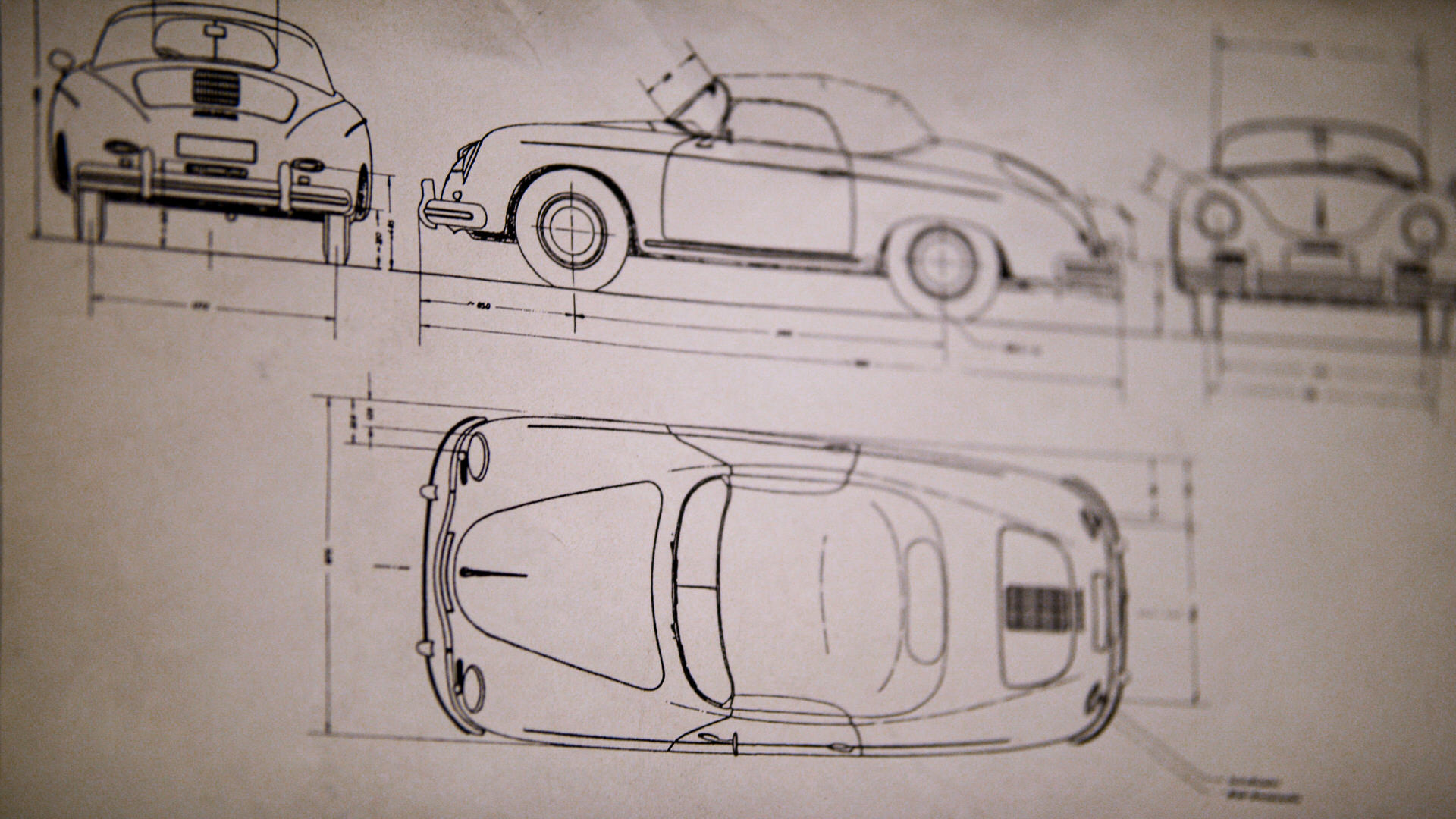
I’m in my 30s and I appreciate cars from a wide range of eras, but at the same time, I understand the appeal of a 911 way more intrinsically than I do a 356. Is there something that you think younger enthusiasts might miss about the 356 platform that makes it ideal for you and your modifications? What’s the charm that could potentially be lost in translation if you haven’t gotten to drive one?
The greatest part about Porsche is that the design is an evolution of design. If you look at the earliest 356 to even the 992 cars, the silhouette, the concept of the cars, the primary design aspects of the cars was a direct evolution. It was never a fresh car from a clean slate. With that said, your generation isn’t going to appreciate them quite as much because for one, the 356 has a lot higher price point than a 911. That’s why it’s always about sharing as much as I can about these little 356s for me, because it’s not a car that everybody can just jump in and buy. But the basic design concepts and the way the cars are put together are very similar to the way even the G-body cars are. There’s still a torsion bar rear suspension. The type of rear engine and all the other design aspects of the car are still very similar. But one of my goals in sharing these cars is to try to keep them as visible as possible so that interest level remains high, hopefully so that future generations will catch a glimpse of these cars and keep them going and the passion for them alive.
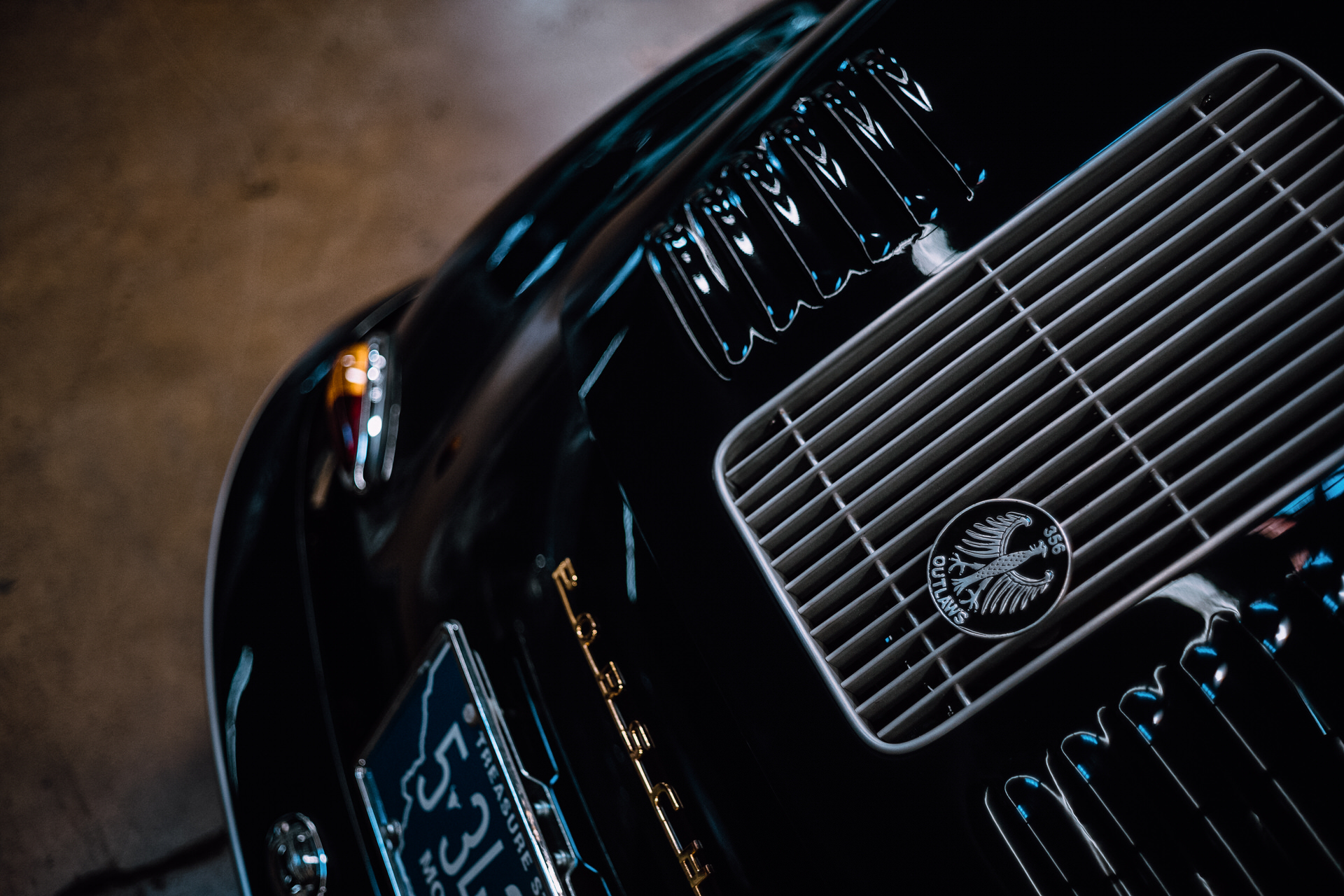
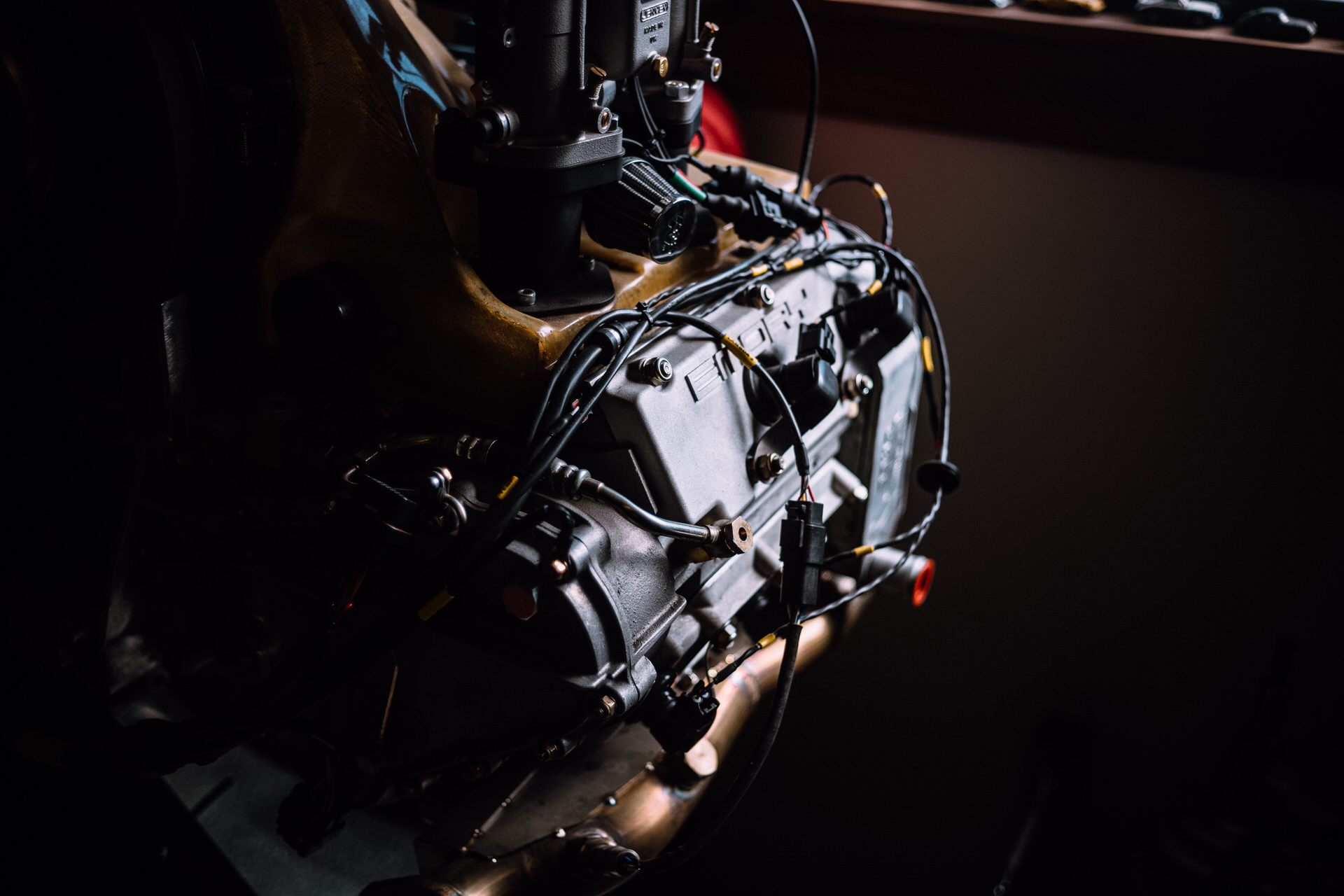
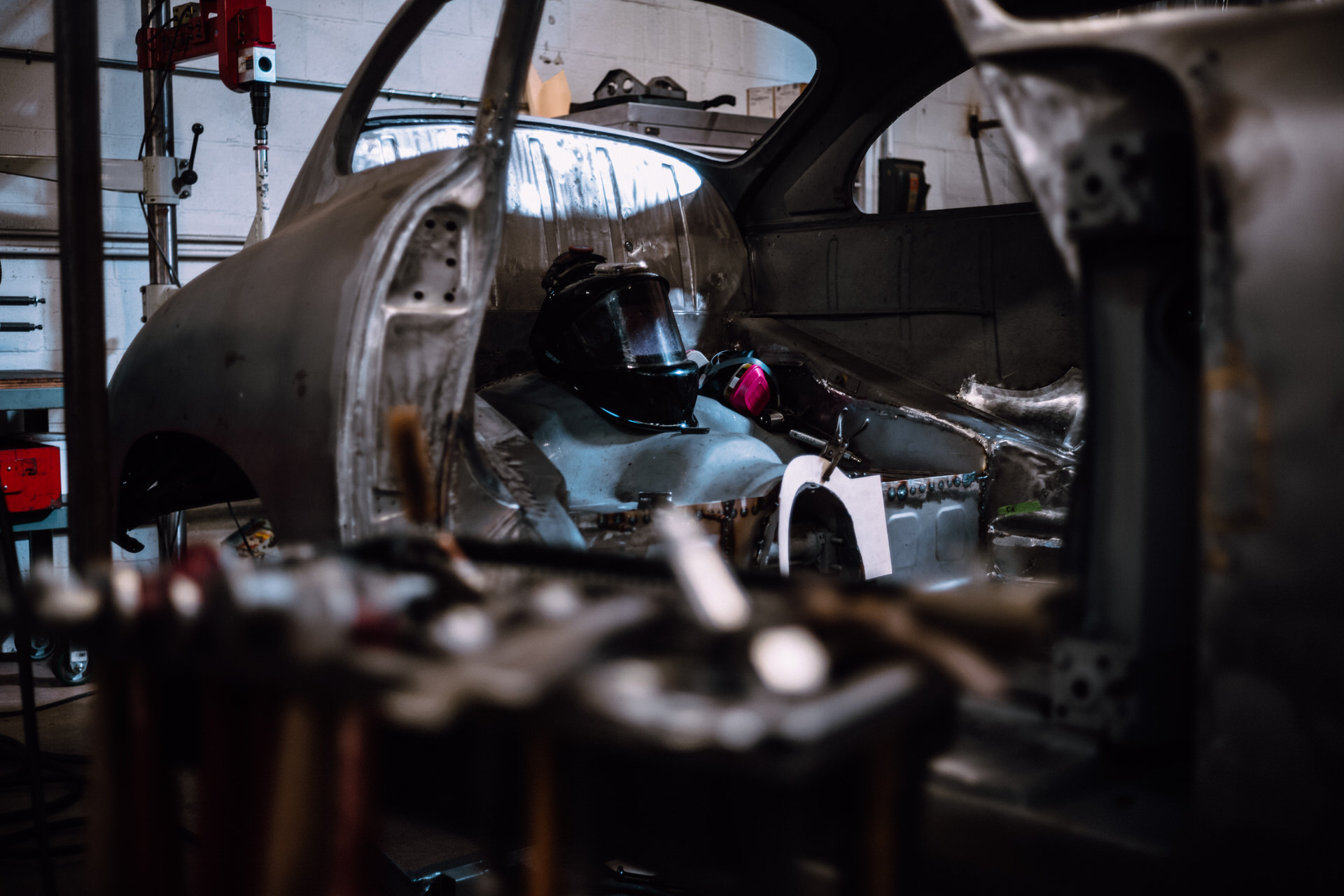
What’s something that goes into one of your builds that you think is missing from a lot of the modern builds? What really differentiates an Emory 356 Outlaw?
For me it goes back to the early lessons that I learned from my grandfather, and that is to modify everything, but make it look as if it’s not been modified. You really have to dig deep into my cars to see all the details and everything that we do. Obviously there’s a few things that stand out; the louvers that we put on the cars, or obvious things like the wheels being a little bit bigger, but for the most part, I try to tone everything down so that there’s not one certain thing that stands out. I’d rather have the whole car come together seamlessly and be built as if Porsche would’ve built it in their special build department back in-the-day if they had had access to modern parts and technology like I do. What I’m doing to the cars is really using parts or technology from Porsche cars made all the way up into the ‘90s and even into the early 2000s, but dragging those parts back and working them into an earlier model.


On the watch side of your world, you’re a fan of design in general and you’ve amassed a really incredible collection of Porsche Design watches, but it sounds like your collecting happened in a passive way. Can you tell me a little bit about your love affair with Porsche Design watches?
As a kid, when my dad was working with Chick Iverson, he was given gifts at certain points in his career, and one particular gift he was given was a Chronograph 1 Porsche Design watch. This was the first version of Porsche Design’s iconic black watch, and my dad wasn’t a watch guy, so he wore it a few times, but it was heavy, and if you’re not wearing it, it doesn’t keep time, so he eventually threw it in the junk drawer next to our telephone. I was probably 6 years old when I first discovered that watch was in there and put it on my wrist and thought I was the coolest kid on the block with this big Porsche watch on. So I would put it on all the time and I even wore it to school a few times and would throw it back in the drawer before my dad would get home. I really fell in love with that particular watch and it engraved itself in my mind, as things you fall in love with at that age often do. Down the road when I got married, my wife and I would always talk about gifts for each other and I said “You know, I’d love to have a watch like my dad used to have someday.” So for a number of years, she searched for a Chronograph 1 and she eventually found the raw steel version of that watch – which is actually a pretty rare version that I think they call it the “sable” – and she bought that for me as my first Porsche Design watch. A number of years later, she found that exact black PVD one just like my dad had, and she was able to buy that watch from Marco [Gerace] from TLG Auto in North Hollywood. Then for our 20th wedding anniversary, she bought me one of the new 1919 watches – another black one. So that’s really how my watch collection started, with 3 gifts from my wife.
Having both the raw steel and the black variants of the Chronograph 1 and the new version really made me appreciate the watches themselves in a different way. I’m not really a watch guy the way some people throw themselves into it; I never said “Oh man, I wanna collect watches” and to be honest, I don’t really know much about other brands of watches. But being a technical guy and loving design, I just started digging deep and over the past 15 years I’ve built a collection of 16 different versions of Porsche Design watches; everything from the compass watch to one of my favorites, the Titan that they made with IWC. And then I’ve received a few as gifts from Porsche Design themselves, I’ve actually got a watch that they did for me through their customization program that’s designed to pick up colors and design aspects from my 911 GT3 RS. It’s a lot of fun and it’s grown into something pretty cool as a side hobby.
Zayne and I found the Titan at a small little watch dealer in Zurich when he and I were there in early 2019. Porsche Design had me come over and introduce their Globe Timer watch at BaselWorld, so Zayne and I spent a couple of days in Zurich just cruising around and we found that Titan there at a little dealer.
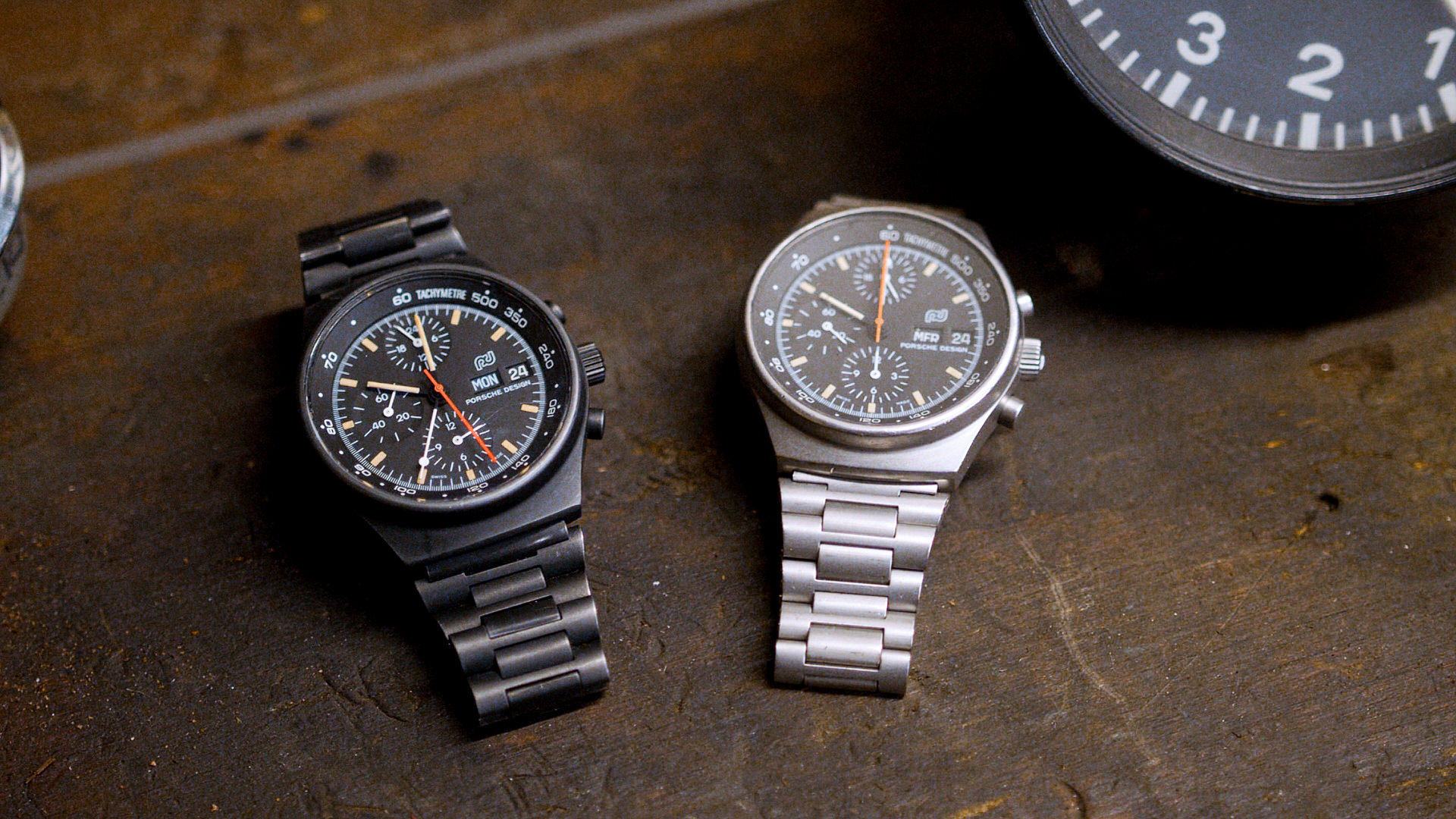
You recently gifted a Chronograph One to Zayne that Cameron [Barr, C + T CEO] sourced for you and I just love how you shared the passion for these watches you discovered through your own dad’s watch with your son in that way.
I had a couple of Tag-Heuer watches through high school and my early 20s, and so when Amy gave me my first Porsche Design watch, I gifted Zayne a Tag that I had. He loved it and started wearing that watch, and then for a couple of significant milestones in Zayne’s life – I think it was graduation and then another Christmas – we gave him a couple of other Tag watches. But he still found himself always making his way to my watch case and pulling out one of my watches anytime he had a date or was headed somewhere like a premiere or something that he was doing, he was wearing one of my Porsche Design watches. So he’s had some great watches of his own, but he was still always coming to my case and taking one of mine and it was usually the black Chronograph 1. Zayne’s got a 1970 911 and since Ferdinand Alexander Porsche designed that particular 911 and the gauges in Zayne’s car are just like the dial on the Chronograph 1, I figured it was time for me to start looking for one for him. This year, for his 24th birthday, we started hunting around and you guys found the perfect one for him and got it all serviced and ready to go – that was the watch that Amy and I gifted Zayne for his birthday! It really is a great full-circle story with my discovering my dad’s watch and the way Zayne was attracted to mine, and I’m so glad he has one of his own now.
Photography by Daley Hake and Chris Elkjar (@chriselkjar) Archival photos courtesy Emory Motorsports.

Check out 'Reference Tracks' our Spotify playlist. We’ll take you through what’s been spinning on the black circle at the C + T offices.

Never miss a watch. Get push notifications for new items and content as well as exclusive access to app only product launches.
Sign up for our newsletter to receive updates and exclusive offers